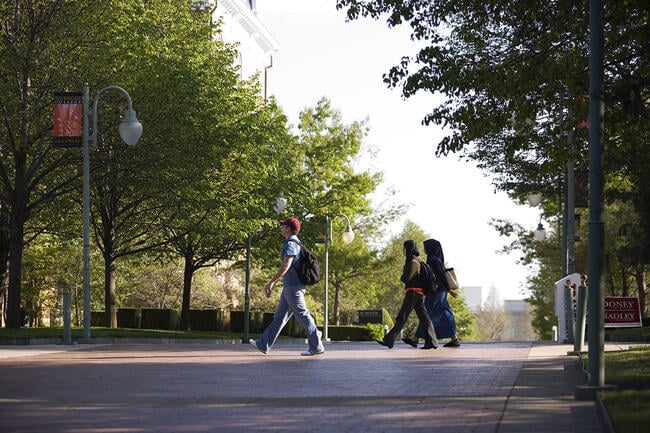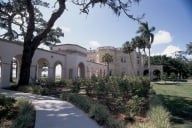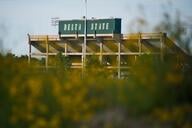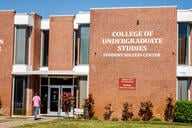You have /5 articles left.
Sign up for a free account or log in.

The University of Arkansas was one of four universities to receive false active shooter reports Monday.
Wesley Hitt/Getty Images
As fall semester classes get underway, colleges and universities have faced a cascade of so-called swatting calls—false reports of serious crimes intended to trigger a large police response and the deployment of SWAT teams. At least seven colleges have investigated false reports of an active shooter on campus since last Thursday.
The calls, which one college leader characterized as a “cruel hoax,” have led to injuries on some campuses and forced some to shelter in place, sending students, faculty and administrators reeling.
At 12:27 p.m. Monday, University of Arkansas officials sent a campus alert telling students to avoid the Mullins Library “due to an active shooter reported.” The library sits in the middle of campus, near the Arkansas student union. An hour later, officials sent a second alert that said campus police were “responding to multiple reports around campus.” They issued an all clear at 3:58 p.m. The university later said that police didn’t confirm any active threats on campus.
Northern Arizona University also investigated a report of a person with a gun at the Cline Library on Monday, the first day of fall classes at the public university in Flagstaff, but found no evidence for the report and issued an all clear that afternoon. So did police at the University of Tennessee, Knoxville, after searching Hodges Library and finding no credible threat, despite reports of an “individual with a weapon.” Iowa State University officials said midday Monday that the active shooting reports they received were determined to be false.
“We will continue to monitor the situation and take all threats seriously. The calls appear to be similar to several anonymous and false ‘swatting calls’ at universities across the country, triggering a response from law enforcement,” Iowa State police said in a statement.
Villanova University has investigated two false shooting reports in the span of four days. The first happened Thursday, Aug. 21, as new students arrived on campus.
“Today, as we are celebrating Orientation Mass to welcome our newest Villanovans and their families to our community, panic and terror ensued with the news of a possible shooter at the Law School,” Villanova president Peter Donohue said in a statement later that day. “Mercifully, no one was injured, and we now know that it was a cruel hoax—there was no active shooter, no injuries and no evidence of firearms present on campus.”
Three days later, around 11 a.m. Sunday, police received a second report of an active shooter at Austin Hall, a student dormitory, ABC News reported. Local law enforcement issued an all clear less than an hour later.
Two other universities received active shooter reports Sunday evening. The University of South Carolina campus police received “a report of gunfire at the Thomas Cooper Library on the Columbia campus,” university officials said in a post on X. Police found no evidence of a credible threat. Two people incurred minor injuries while evacuating from the building. Louisiana State University of Alexandria issued an all clear for an active shooter threat received by the local police that same day.
“Every potential threat is treated with the utmost seriousness,” Louisiana chancellor Paul Coreil said in a statement. “We thank God everyone is safe.”
It’s not the first time colleges have faced a wave of swatting calls. In January and February of 2022, historically Black colleges and universities received dozens of bomb threats—all allegedly committed by one minor. More than 50 threats were made to HBCUs and predominantly Black churches, all of which were determined to be false.
Ashley Mowreader contributed reporting to this article.



